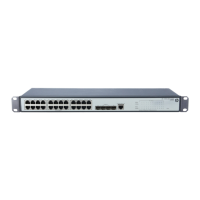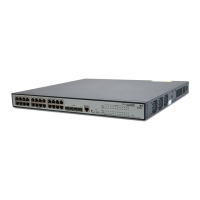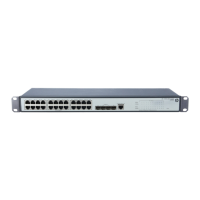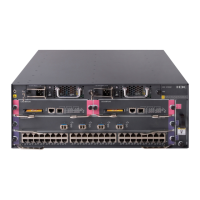are suitable for different application scenarios. As a supplementary to the web interface, the CLI
provides some configuration commands to facilitate your operation, which are described in this chapter.
To perform other configurations not supported by the CLI, use the web interface.
You will enter user view directly after you log in to the device. Commands in the document are all
performed in user view.
Getting started with the CLI
As a supplementary to the web interface, the CLI provides some configuration commands to facilitate
your operation. For example, if you forget the IP address of VLAN-interface 1 and cannot log in to the
device through the web interface, you can connect the console port of the device to a PC, and
reconfigure the IP address of VLAN-interface 1 at the CLI.
This section describes using the CLI to manage the device.
Setting up the configuration environment
To set up the configuration environment, connect a terminal (a PC in this example) to the console port on
the switch with a console cable.
A console cable is an 8-core shielded cable, with a crimped RJ-45 connector at one end for connecting
to the console port of the switch, and a DB-9 female connector at the other end for connecting to the
serial port on the console terminal.
Figure 8 Console cable
Use a console cable to connect a terminal device to the switch, as follows:
Step1 Plug the DB-9 female connector to the serial port of the console terminal or PC.
Step2 Connect the RJ-45 connector to the console port of the switch.

